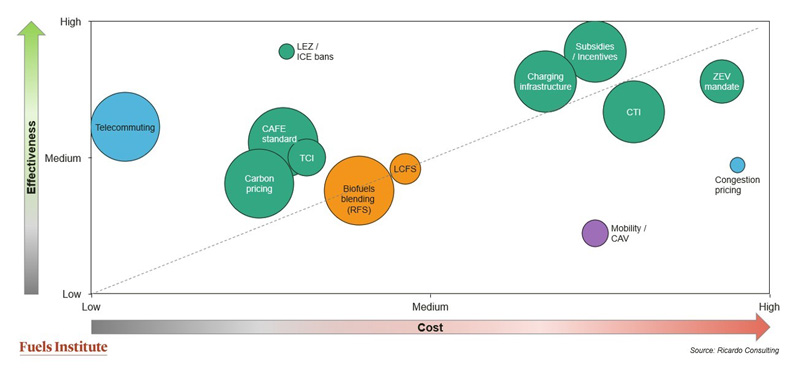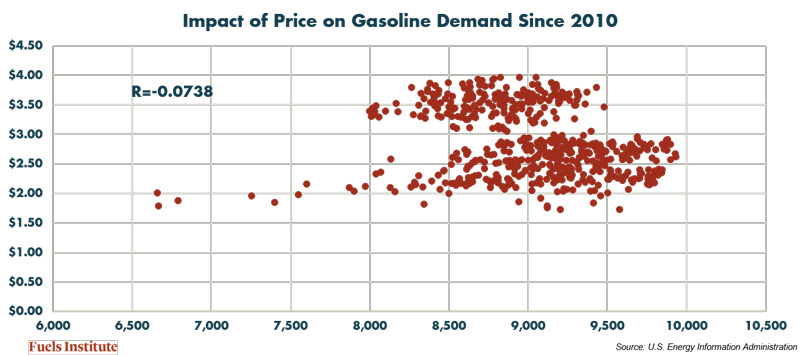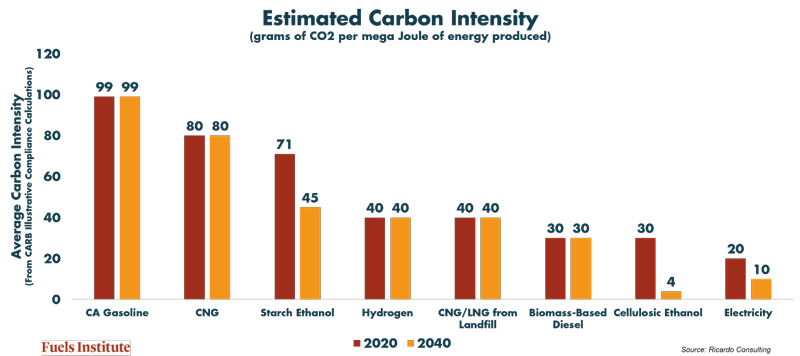February 3, 2021
On January 20, 2021, President Joe Biden signed an executive order committing the United States to accept the provisions of the Paris Agreement on climate change. This was among his first acts as President and, in my opinion, symbolizes the commitment of his administration to pursuing policies that will reduce carbon emissions in the U.S. With this commitment comes the need to fully understand the options that may be available to policymakers, along with a comparison of their relative effectiveness and costs so that the best combination of policies can be developed and implemented.
Regardless how policies and technologies evolve to reduce emissions, I believe that there will constantly be a need for personal mobility – we have places to go, people to see. And the highway system that connects us all will continue to be a vital feature in our overall ecosystem. As Tom Cochrane sang in 1992 (and then again Rascal Flatts in the 2005 animated movie “Cars”), “Life is a Highway, I want to drive it all night long.” In the spirit of this great song, I hope that the road trip will continue to inspire us and help us figure out the best long terms solutions for the sector.
Life’s like a road that you travel on
Where there’s one day here and the next day gone
Sometimes you bend, sometimes you stand
Sometimes you turn your back to the wind
There’s a world outside every darkened door
Where blues won’t haunt you anymore
Where the brave are free and lovers soar
Come ride with me to the distant shore
I also see a metaphor for addressing climate emissions and the highway system that enables us to connect – there are always several ways to get somewhere and the route we choose can be based upon a variety of factors: time to destination, visiting a favorite roadside diner or avoiding stressful congestion areas. Likewise, the path to reducing carbon emissions from transportation includes a variety of “routes” and it just might require a road to trip to explore the various options to figure out which one or combination will have the greatest effect on emissions and impose the smallest economic impact on consumers.
Fortunately, the Transportation Energy Institute recently published “The Impact of Transportation-related Environmental Initiatives” which provides an objective assessment of 37 global efforts and a deep dive into 14 of the most prominent initiatives affecting transportation. As we embark upon a dedicated path to reducing carbon emissions, this report can serve as a foundation for evaluating which options, or combinations of options, might be the most effective.
Evaluating the Map for Possible Routes
The battle against carbon emissions can take many different forms, some more effective than others, some less expensive than others. The chart below plots 14 different initiatives analyzed in our report based upon their relative effectiveness and cost compared to one another. This comparison forms the basis of our report and provides a quick snapshot of how these initiatives rank. For those specifically related to carbon, I typically focus on the following: Carbon pricing, transportation climate initiative (TCI), biofuels and vehicle electrification. For this column, I am not going to discussed vehicle electrification – we cover that extensively in many other formats. So, let’s focus on the first three which all occupy the middle of the chart and deliver moderate benefits at a moderate price.

A Global Route: Carbon Pricing
These initiatives have significant momentum globally, with 20% of global greenhouse gas (GHG) emissions subject to some sort of carbon fee in 2020. A carbon fee imposes a monetary cost on businesses that emit carbon into the environment. The concept assumes such a fee will encourage businesses to adopt measures to reduce their emissions and lower their compliance costs. The fees today range from $0.08 per metric ton of CO2 in Poland to $132 per ton in Sweden. In Europe, the average tax rate imposed in about $40 per ton. In 2018, 42% of global revenues generated from carbon fees ($44 billion) were used to support other environmental projects, thus enhancing the potential benefit of these fees beyond encouraging businesses to reduce their own emissions.
Our report took at look at the potential impact of a carbon fee in the United States and used a $40 per ton value as a baseline for analysis. According to the available literature, a $40 fee would likely impact the coal and natural gas markets more significantly than that of gasoline. At $40, coal prices were estimated to increase 264% and natural gas 50%. Gasoline prices were estimated to increase $0.40 per gallon, a significant increase but less than 20% above current average prices. Such an increase in the retail price of fuel is unlikely, in the long term, to have a significant impact on consumption.
When we evaluate the relationship between the price of gasoline and the gallons consumed, there appears to be no statistical linear correlation. Which means, that the price of gasoline does not necessarily influence consumption.
The following chart plots weekly national average retail prices and total gallons consumed, according to the U.S. Energy Information Administration, between 2010 and 2020. When these data points were compared to evaluate their correlation, the result was a coefficient of -0.0738. A coefficient rating of 1 or -1 indicates perfect linear correlation – this data indicates no relationship which suggests a carbon fee would not effectively reduce gasoline demand.

This next chart supports this finding, but instead of using national weekly averages it plots actual daily retail prices and volumes reported from nearly 2,000 retail stores from March 2019 through February 2020. This direct, store level comparison also returns a coefficient of -0.0718.

What this data does not show is at what sustained retail price will consumers actively seek alternatives to gasoline. In 2008, when average national retail prices surpassed $4.00 per gallon, there was anecdotal evidence of consumers changing behavior – combining trips, carpooling, seeking more efficient vehicles. There may be a price point at which consumers will change behavior. However, that price point is a moving target. According to five years of monthly consumer surveys conducted by NACS, the price at which consumers would consider changing their behavior moved up and down in the same direction as the actual gasoline price they were paying at the time.
That said, there are implications associated with this data indicate that should be considered carefully. It seems for a carbon fee to be effective with regards to the transportation sector, the revenues must be invested in other carbon mitigation efforts. Unfortunately, an evaluation of legislation introduced in Congress to establish a carbon fee does not often include such investments. Of seven U.S. bills introduced, the intended investment of revenues in other environmental efforts is almost non-existent. The legislators, however, did recognize that an increase in energy costs would disproportionately affect lower income consumers and included several subsidies to mitigate the negative impact on these communities. But they do not double down on carbon mitigation by leveraging carbon fee revenues for other environmental efforts.
A Regional Route: Transportation Climate Initiative
The Transportation Climate Initiative (TCI) is regional program still under development among twelve states in the northeast region of the United States and is designed to reduce carbon emissions from transportation by 20% – 25%. It is presented as a cap and investment program in which fuel suppliers must acquire allowances, provided by the regulator, to cover the emissions associated with regulated fuels, such as gasoline and diesel. These allowances are estimated to generate up to $7 billion per year by 2032 and potentially increase fuel prices by up to $0.27 per gallon.
The main difference between TCI and the federal legislation proposing carbon fees is that TCI would reinvest these revenues into other programs designed to reduce carbon emissions from the transportation sector. In fact, the allowances imposed by the program are assumed to only deliver 6% of the targeted carbon emissions reductions with the remaining 14% – 19% of reductions achieved through these other programs. As of now, only four of the twelve states are officially committed to participating in the program, although others are expected to commit prior to initiation in 2022.
A Route through the Heartland: Biofuels
One way to effectively reduce carbon emissions from the transportation sector is to incorporate renewable fuels into the product mix. According to the California Air Resources Board (CARB), ethanol and biomass-based diesel have a significantly lower carbon intensity (CI) than gasoline.

Our recent study looked at the federal Renewable Fuel Standard (RFS) and the California Low Carbon Fuel Standard (LCFS) program to evaluate the effectiveness and cost of biofuels programs. From the analysis, the LCFS seems to have more successfully achieved its stated objectives, which sets targets for reducing the CI of fuel. And to date, the cost of the program has been relatively low. However, the target CI reduction through 2020 was to be 7.5% lower than that measured in 2010. By 2030, the reduction target is 20% below 2010, a much more aggressive objective. By 2025, it is estimated that the program will have avoided a cumulative $8 billion in avoided GHG emissions and saved consumers up to $7 billion in fuel consumption. On the other hand, by 2025 it is estimated LCFS will cost $6 – $10 billion per year in compliance, which could equate to up to $0.70 per gallon.
There are efforts in other parts of the country to establish programs similar to the one in CA, including an effort among states in the Midwest and among some northeastern states. There are also discussions about doing something at the federal level, especially as we near the end of the statutory volumetric provisions of the RFS. The costs and benefits of such programs need to be carefully balanced if similar programs should be contemplated for the nation as a whole.
Meanwhile, the RFS was established with specific volumetric targets for qualified renewable fuels. As everyone familiar with the program knows, the Environmental Protection Agency (EPA) has waived the volumetric requirements for advanced biofuels due to a lack of production and availability. These fuels have a much greater impact on reducing GHG than do traditional biofuels (as demonstrated in the graphic above) and their lack of inclusion in the market has limited the overall GHG effectiveness of the program. It is estimated that the RFS has delivered less than a 5% reduction in GHG emissions due to the limited availability of these fuels.
However, the cost of the program has been relatively minor. While estimates place the compliance cost somewhere between $5 and $20 billion per year, this has to be viewed in context. For example, the fuel retailing industry alone (not including other sectors of the liquid fuels market) generates more than $400 billion each in year in fuel sales. With that in mind, the RFS has been relatively inexpensive – especially for the consumer.
The bottom line is that biofuels have the ability to reduce the CI of the liquid fuels market and the costs could be moderate relative to other strategies. If you look at the first graph presented in this article, you see the biofuels programs are rated as medium for effectiveness and costs. While not a silver bullet, they are critical because, even if the market switches to rely more prominently on zero emissions vehicles (ZEV), the nation is going to continue consuming liquid fuels in combustion engines for decades and any progress in reducing the CI of that sector should be explored for viable opportunities.
Mapping the Best Route
The commitment of the Biden Administration to reduce carbon emissions is absolutely clear, and early indications are that vehicle electrification will be a primary tool they seek to leverage in pursuit of that objective. And while this may not turn out to be the panacea some have suggested, I am certain it will be a very important part of what should be a more comprehensive approach to carbon mitigation from the transportation sector – but it cannot stand alone.
There are a variety of tools (or routes) available to policymakers, some more effective and more expensive than others, and it is incumbent upon our leaders to weigh the pros and cons of each carefully and seek to assemble an approach that balances carbon emissions reductions with the economic interests of consumers and families. This recent Transportation Energy Institute report is one tool to help them objectively evaluate the options available to them. (Visit our YouTube channel for series of videos relative to this report, including this overview webinar.)
The American road trip will survive, of that I am confident. Here is hoping that a pragmatic, comprehensive approach to carbon mitigation also will prevail and we can make meaningful progress towards reducing carbon emissions from the transportation sector while enabling families to continue to explore all the wonders the nation has to offer. We believe this report can be a very useful map to help chart our path forward.
There ain’t no load that I can’t hold
Road so rough, this I know
I’ll be there when the light comes in
Just tell ’em we’re survivors
Life is a highway
I want to ride it all night long
(Yeah, yeah, yeah, yeah)
If you’re going my way
I want to drive it all night long







